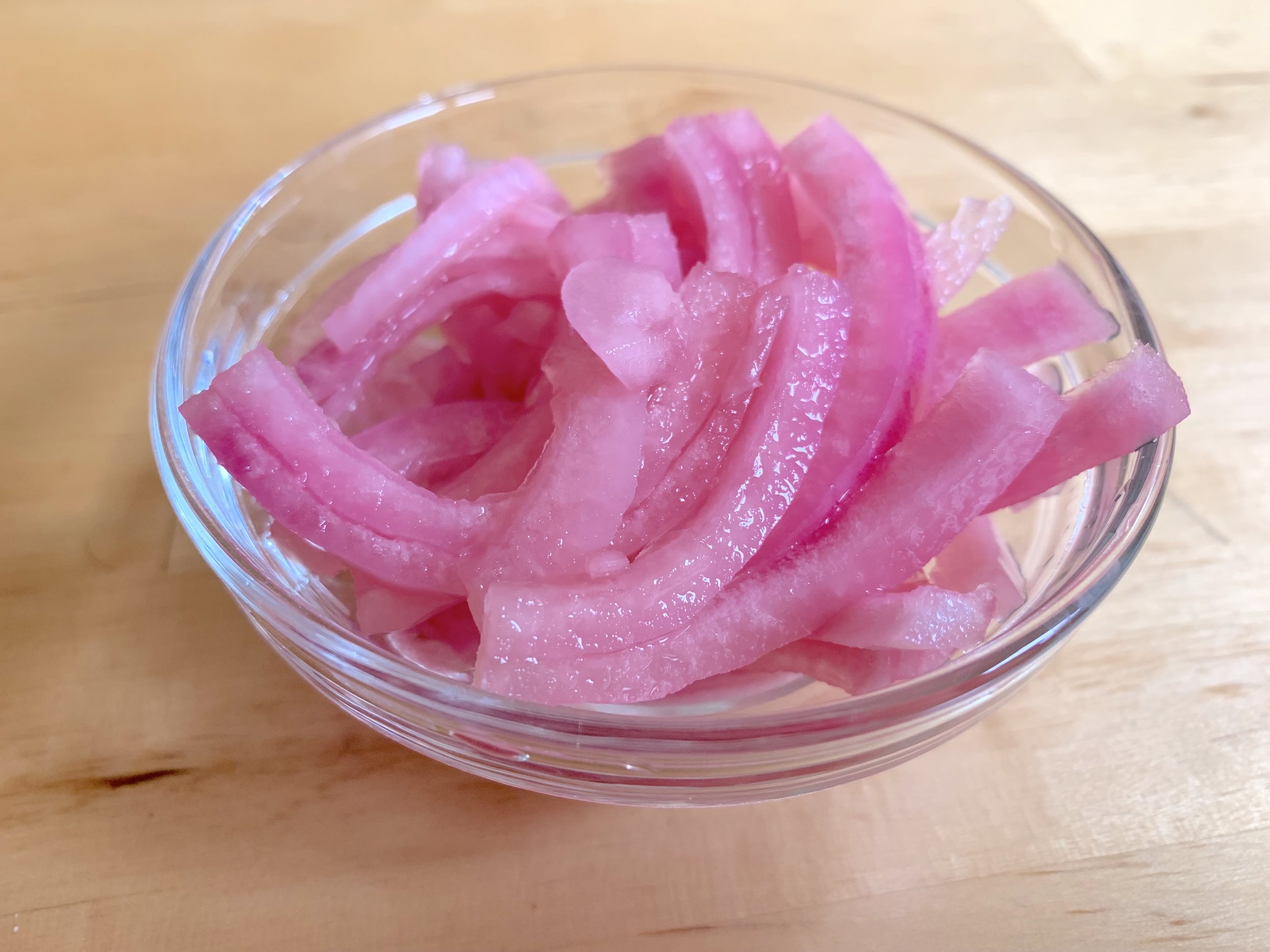Pickled Korean Radish

치킨무 (Chikin-Mu)
Korean cuisine features many fresh pickles, including an impressive variety made from daikon radish. Radishes have been grown on the Korean Peninsula since the Three Kingdoms era [1], and are now the most widely cultivated crop in South Korea, with over 4 million tons grown annually. Korean radish (무) is a specific variety of daikon, shorter and denser than their Japanese cousins, with partly green skins. This simple pickled preparation of the radish, sweet, sour, and crisp, is most commonly served as a side dish to Korean fried chicken, [2] but can also be found as an accompaniment to potstickers and other heavy foods.
Ingredients
1 lb Korean radish
1 tbsp salt
⅓ cup sugar
½ cup rice vinegar
½ cup water
Begin by peeling the radish and chopping it into ½ inch cubes. It is important that the radish pieces are uniform. Otherwise, the penetration of the brine—and therefore the flavor of the finished pickle—will be inconsistent.
In a large bowl, combine the salt, sugar, rice vinegar, and water. Mix well, until the salt and the sugar are completely dissolved. Feel free to increase or decrease the amounts of salt and sugar to your taste.
Add the cubed radish to a glass container, and pour over the brine, making sure all of the pieces are submerged. If not, add water as necessary until the radish pieces are covered. I always prefer to use a glass container to store pickles, as the highly acidic brining solution can react with metal or plastic.
If you’re in a rush, keep the radish pieces in the solution for 2 to 3 hours at room temperature. However, if you have the time, it is best to refrigerate the radish in the brine at least overnight in the refrigerator. As the radish on its own is very mild, I personally prefer the flavor of these pickles after 2 or 3 days in the brine. Keep the pickles in the refrigerator, submerged in their brine, for up to 2 weeks. The flavors will intensify over the first 2 or 3 days, until the concentrations of salt and sugar within the chunks of radish equilibrate with those of the brine.
When you are ready to serve the pickles, simply drain and plate the radish cubes.
Substitutions
If you can’t find Korean daikon radish, you can substitute standard white daikon radish. However, normal daikon radish is not as firm as the Korean variety, and will not stand up to prolonged pickling. Instead, let the radish pickle for only 20 minutes before serving. Carrots can be pickled using this recipe as well.
If you want to add some spice to your pickle, add some chopped fresh or dried chilies to the pickling brine. If you don’t have rice vinegar on hand, you can substitute it with apple cider vinegar, or white vinegar plus an additional teaspoon of sugar.
[1] 57 BCE-668 CE. The Three Kingdoms referred to are Goguryeo (고구려/高句麗), Baekje (백제/百濟), and Silla (신라/新羅), though many other, smaller, states coexisted on the peninsula in this era.
[2] The Korean name for this type of pickle literally means “Chicken Radish.”
Recipe
Prep Time: 10 min Cook Time: 0 min Total Time: 10 min
(+24 hrs inactive) (1 day)
Difficulty: 1/5
Heat Sources: None
Servings: 8
Ingredients
1 lb Korean radish
1 tbsp salt
⅓ cup sugar
½ cup rice vinegar
½ cup water
Instructions
1. Peel the radish and cut into ½ inch cubes.
2. In a large bowl, combine the salt, sugar, rice vinegar, and water to form the brine. Mix well to dissolve the salt and sugar.
3. Add the cubed radish to the container, and pour over the brine. Cover the radish with additional water if necessary.
4. Pickle for 2-3 hours at room temperature, or up to 2 weeks in the refrigerator.
5. Drain radish cubes and serve.









